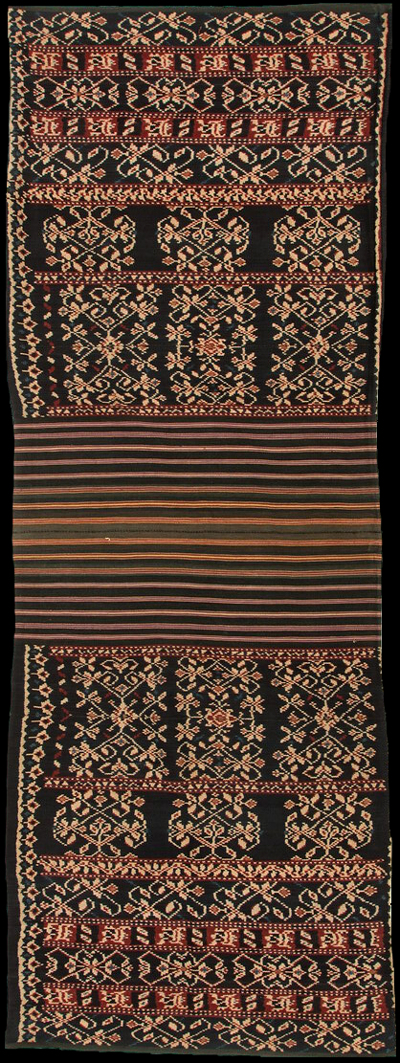| |
 
 | | | |
294 Roti Group, Roti
Pou (sarong)
| | | Period: | Late colonial | | Yarn: | Cotton, commercial, fine, quad-ply | | Technique: | Warp ikat | | Panels: | 3 | | Size: | 60.5 x 165 cm (1' 11" x 5' 4") LW: 2.73 | | Weight: | 580 g (20.5 oz), 291 g/m2 (0.95 oz/ft2) | | Design: | Three panel sarong woven by a lady of the commoners class, decorated with a pattern of flowering branches in white on saturated, nearly black indigo, with accents in morinda red. One can't fail to appreciate the chic of Rotinese ikat weaving. The patterns are delicate and beautifully rhythmic, the palette is severely restrained, relying on contrast rather than vibrancy. The distribution of the red dashes is makes the motifs scintillate, and adds a layer of depth. While sharing structural elements and a common pool of motifs, all Roti sarongs are unique works or art: no Roti ikat is ever the same. | | Comment: | [PHOTOGRAPHY PROVISIONAL] The striped mid-section, a feature of perhaps a quarter of Roti sarongs, is strikingly similar to that of Tanimbar's ubiquitous tais marin/bakan maran. When worn on Savu, the striped mid section is covered by the overturned top panel. On Tanimbar the stripes running over the wearer's backside accentuate the buttocks during dances. Presumably, during Savu's padoa dances the same visual effect comes into play, though, other than Tanimbar, it has not been reported as intentionally sought. | | Background: | Chapters on Roti Group and Roti. | | Compare: | 127 180 014 | | Sources: | Very similar to pou in Khan-Majlis, Woven Messages, Fig. 242. | | |

©Peter ten Hoopen, 2025
All rights reserved.
|
|


